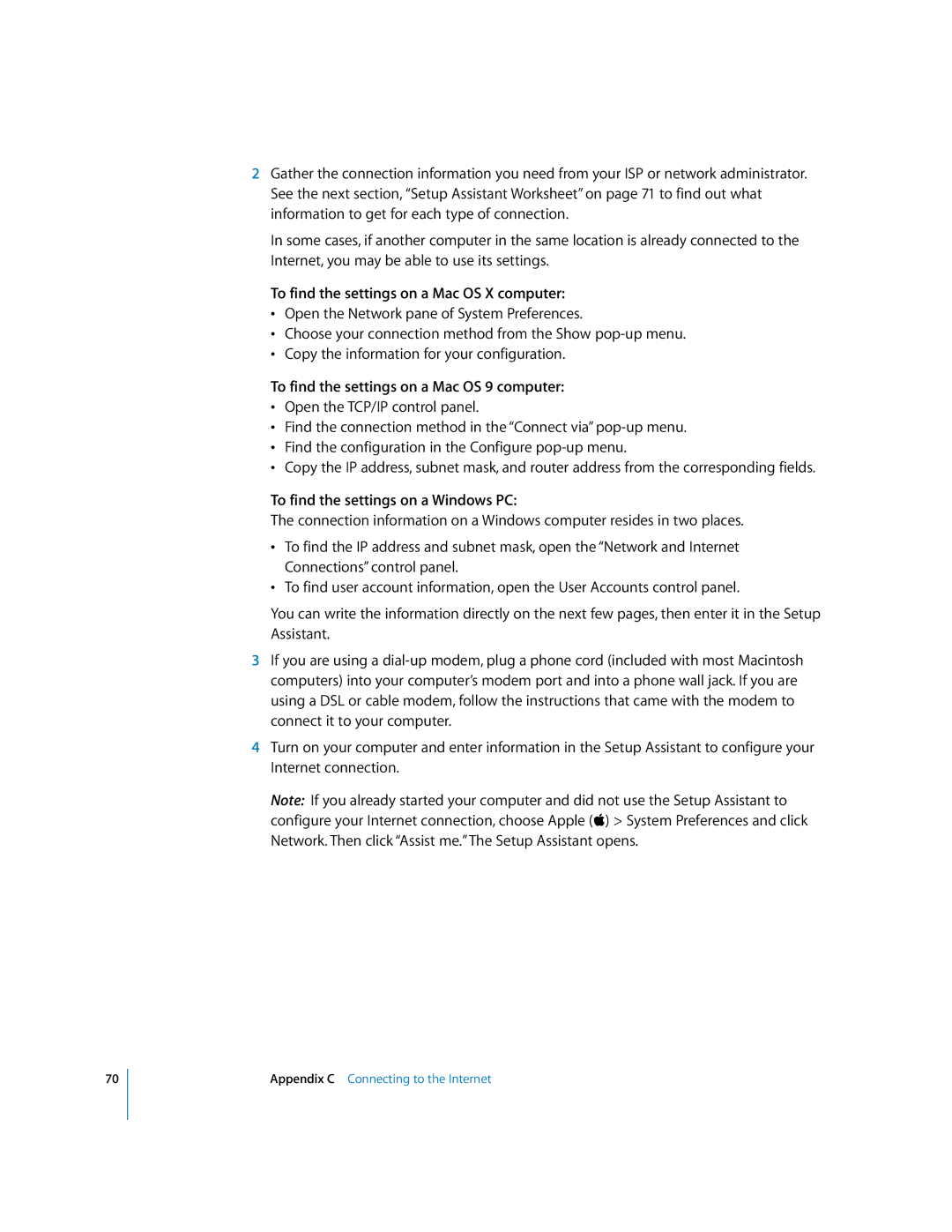70
2Gather the connection information you need from your ISP or network administrator. See the next section, “Setup Assistant Worksheet” on page 71 to find out what information to get for each type of connection.
In some cases, if another computer in the same location is already connected to the Internet, you may be able to use its settings.
To find the settings on a Mac OS X computer:
•Open the Network pane of System Preferences.
•Choose your connection method from the Show
•Copy the information for your configuration.
To find the settings on a Mac OS 9 computer:
•Open the TCP/IP control panel.
•Find the connection method in the “Connect via”
•Find the configuration in the Configure
•Copy the IP address, subnet mask, and router address from the corresponding fields.
To find the settings on a Windows PC:
The connection information on a Windows computer resides in two places.
•To find the IP address and subnet mask, open the “Network and Internet Connections” control panel.
•To find user account information, open the User Accounts control panel.
You can write the information directly on the next few pages, then enter it in the Setup Assistant.
3If you are using a
4Turn on your computer and enter information in the Setup Assistant to configure your Internet connection.
Note: If you already started your computer and did not use the Setup Assistant to configure your Internet connection, choose Apple (K) > System Preferences and click Network. Then click “Assist me.” The Setup Assistant opens.
Appendix C Connecting to the Internet
